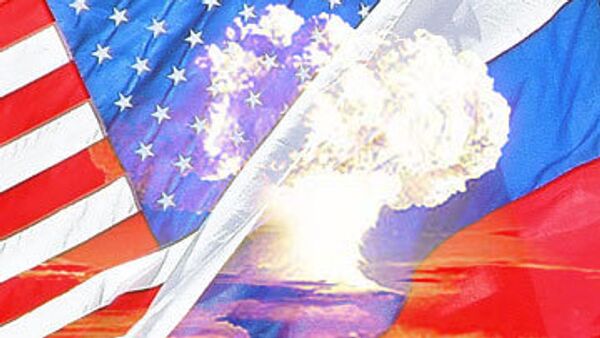MOSCOW. (Ilya Kramnik, RIA Novosti military commentator) - The new Strategic Arms Reduction Treaty (START) between Russia and the United States has become one of the most discussed issues of the year.
The United States and Russia are about to miss the second deadline for replacing the landmark 1991 treaty, which lead the two cold war powers to begin reducing their formidable nuclear arsenals. They failed to agree by the time START I expired on December 5, and now by the end of the year. However, negotiators on both sides expect to reach an agreement early next year.
The new START treaty would reportedly reduce each side's strategic nuclear warheads to between 1,500 and 1,675 and nuclear carriers to between 700 and 750. Earlier, the sides had discussed 500 to 1,100 carriers, which gave the United States an advantage given that Russian carriers will be naturally reduced over the next decade.
There are three major sticking points in the new agreement:
1. How to link strategic arms reduction with restricting the global missile-defense system.
2. Limiting the "return potential" - the number of carriers and warheads which are stockpiled but could be brought back into action.
3. Control over mobile ground systems and restrictions on the areas of their deployment.
The missile-defense system long ago became a political issue between Russia and the United States. Nevertheless, a missile defense system capable of protecting against several hundred intercontinental missiles is unlikely to be built in the next 15 to 20 years. Therefore, all it could do would be to minimize damage in case of an attack, and only if its first strike hits the bulk of the enemy's missiles. And, even so, in case of a hypothetical conflict between Russia and the United States, dozens of warheads would break through, and damage would be unacceptable.
Yet for Russia a global missile-defense system developed by the United States would mean a crushing blow to the existing nuclear-missile parity. In America, this issue has become a useful tool for many powerful political groups capable of blocking the treaty's ratification by Congress if it contains clauses restricting the U.S. missile defense plans.
Return potential is also an important issue for the new treaty. Previous agreements allowed both sides to transfer part of their nuclear carriers to non-nuclear forces and stockpile both carriers and warheads that would not be counted with regard to the agreement's "ceilings" but could still be readily available in an emergency.
In fact, both sides profited from this loophole, but the average age of U.S. carriers and warheads was lower and defense funding higher, which allowed the United States to stockpile more weapons while Russia was forced to discard aging ones.
This was especially true of strategic aviation: the United States removed nearly 100 B-1B bombers and a number of B-52 jets from the official START count by registering them as non-nuclear forces but still kept them available as potential nuclear weapons carriers.
However, by the available information, the United States has made concessions on the issue, agreeing to consider all strategic delivery vehicles as nuclear carriers, which significantly reduces the possibility of deploying additional warheads. The planned reduction of delivery vehicles to between 700 and 750 will further limit that possibility.
The restrictions on deployment of mobile systems are also an important aspect of the START treaty. One of Russia's negotiation achievements is that the United States agreed to give up control of the deployment of the Topol, Topol-M and RS-24 missile systems. This will increase the viability of Russia's strategic missile force and simultaneously devaluate the hypothetical U.S. missile defense system, which largely depends on locating the enemy missile launch sites in advance.
Theoretically, having secured concessions on return potential and mobile systems deployment control, Russia can also compromise on restrictions of U.S. missile defense plans, which, in this case, will be far less valuable anyway.
So what has cased both sides' willingness to compromise? Russia vitally needs a mutual reduction of strategic nuclear forces, due to the natural aging of its own nuclear arsenal, much of which will have to be taken our of service in the next decade.
Current efforts to extend Soviet missiles' service lives could slow the aging process down, but at any rate Russia is unlikely to have more than 500 to 550 carriers.
And the United States will have to face this problem as well. Washington currently maintains its nuclear arsenal by repairing and refurbishing existing weapons and manufacturing even fewer missiles than Russia. Therefore, the ceiling of 700-750 strategic delivery vehicles becomes acceptable for both sides.
The opinions expressed in this article are the author's and do not necessarily represent those of RIA Novosti.



